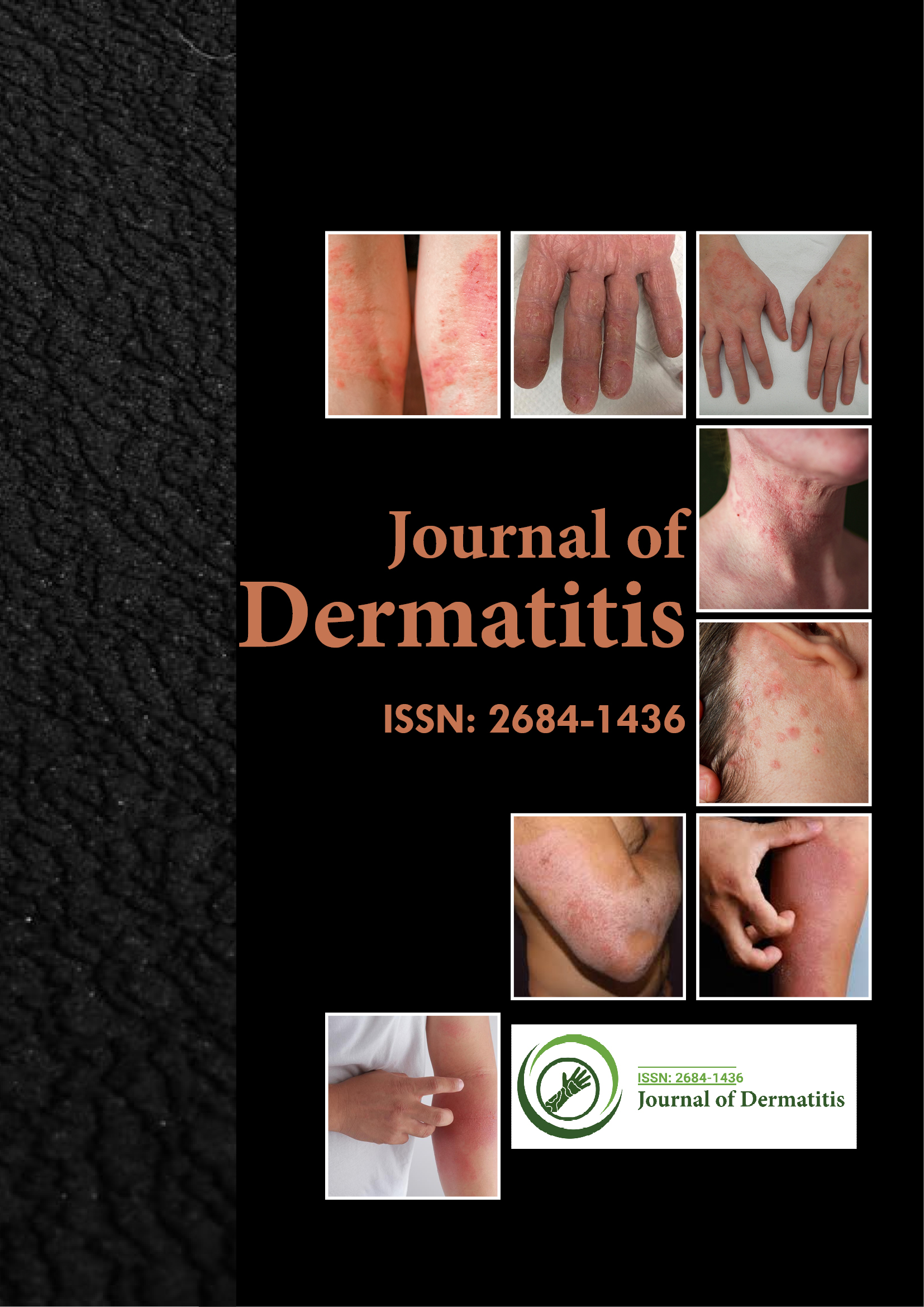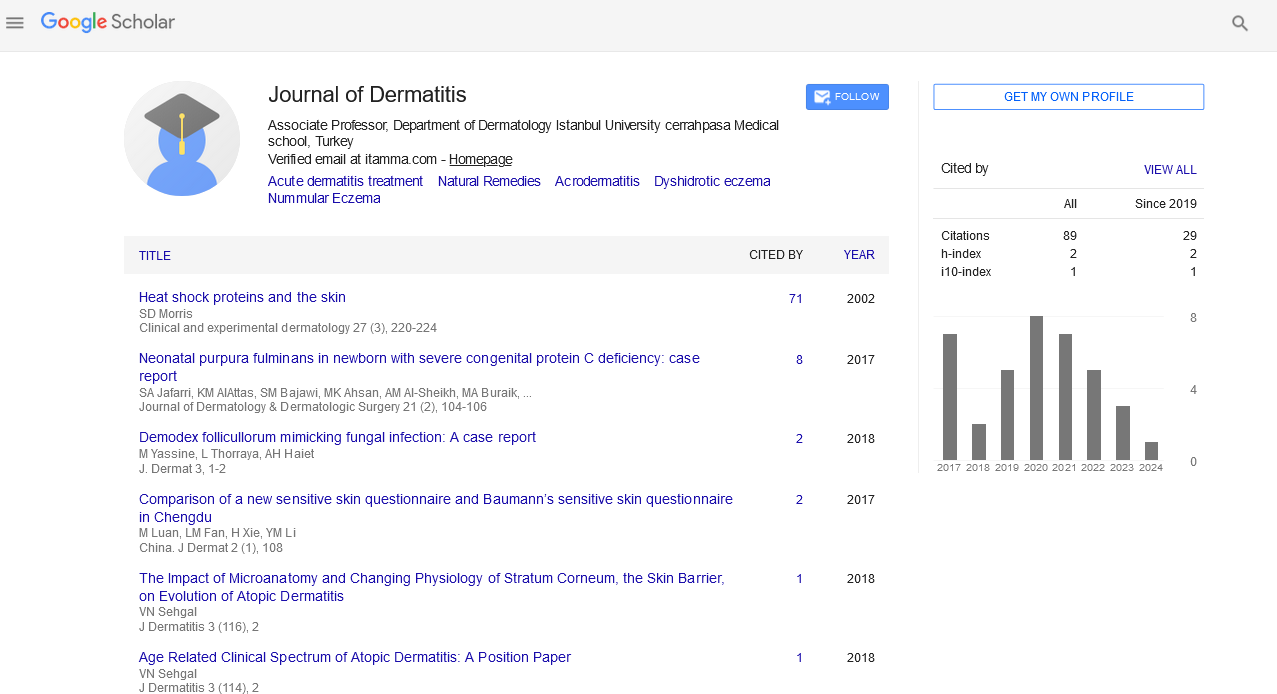Indexed In
- RefSeek
- Hamdard University
- EBSCO A-Z
- Euro Pub
- Google Scholar
Useful Links
Share This Page
Journal Flyer

Open Access Journals
- Agri and Aquaculture
- Biochemistry
- Bioinformatics & Systems Biology
- Business & Management
- Chemistry
- Clinical Sciences
- Engineering
- Food & Nutrition
- General Science
- Genetics & Molecular Biology
- Immunology & Microbiology
- Medical Sciences
- Neuroscience & Psychology
- Nursing & Health Care
- Pharmaceutical Sciences
Editorial - (2021) Volume 6, Issue 1
The Age of Botanical: Are Natural Ingredients Safe and Effective in Treatment of Pigmentation
Ruben Smith*Received: 06-Jan-2021 Published: 27-Jan-2021, DOI: 10.35248/2684-1436.21.6.e109
Introduction
Pigmentary issue is quite possibly the most widely recognized skin issues that patient visit the specialist and OTC drug store. The pattern is towards the utilization of characteristic organic specialists which are acquiring ubiquity as they is a great deal of complexities of compound specialist. The accessibility of Hi-tech laser treatment skincare is the most widely recognized family unit thing for skin upkeep. On the proof based examinations are not many in the middle of the RCT and a significant number of such investigations are short and there is no guarantee if there are any entanglements on long haul use. The notoriety of natural among the client are not as much as thought quantities of studies that can put a stamp confirming unquestionably which is exceptionally powerful with long enough examination to explain the missing of difficulties. In spite of the fact that there is a deficiency of proof based exploration contemplates, there are a few normal fixings indicated promising viability as depigmenting specialists including azelaic corrosive, lignin peroxidase, arbutin, ellagic corrosive, soy and ascorbic corrosive iontophoresis. Hyperpigmentation is mostly brought about by an expansion in melanin. It is common shade that gives our skin, hair and eyes their shading. There are gigantic quantities of components that can trigger an increment in melanin creation yet the principle ones are hormonal impacts, sun openness, age and skin wounds or aggravation. Hyperpigmentation isn't really a genuine condition however a term that portrays skin which seems more obscure. It can happen like little fixes, cover bigger regions and influence the whole body. In other case expanded pigmentation is additionally isn't destructive it very well may be a manifestation of ailment. There are a few kinds of hyperpigmentation however the basic ones are melasma, sunspots and post provocative hyperpigmentation. Melasma is brought about by hormonal changes and can create during pregnancy. The zones of hyperpigmentation can show up on any territory of whole body however most regularly show up on stomach and face. Sunspots are likewise called as liver spots or sun oriented lenities. Sunspots are basic they are identified with abundance sun openness over the long haul.
They are by and large shows up as spots where the zones of body are presented to sun like hands, face and neck. Present provocative hyperpigmentation results on injury or fiery to the skin and the normal reason for this kind is skin inflammation. With truly expanding number of patient looking for dermatologist guidance on imperfection issue, there is additionally a flood of OTC buy from drug store on flaw control specialist. Despite the fact that the accessible proof based exploration considers are restricted, the sign show the promising use of common elements for imperfection control against the previous highest quality level of utilizing hydroquinone. The fixings like soy, lignin peroxidase, ascorbic corrosive iontophoresis, and arbutin, ellagic corrosive and mulberry. Notwithstanding show guarantee in treating hyperpigmentation, these specialists will likewise give more prominent knowledge into the pathogenesis of dyschromias and in this manner improving our comprehension of numerous complexities of shade problems. The accessible proof shows the adequacy of natural in pigmentation treatment and there is protected up until now. The plan of a thought planned twofold visually impaired RCT preliminary that is adequately long enough to close the viability as well as wellbeing of botanicals.
Citation: Smith R (2021) The Age of Botanical: Are Natural Ingredients Safe and Effective in Treatment of Pigmentation. J Dermatitis. 6:e109.
Copyright: © 2021 Smith R. This is an open-access article distributed under the terms of the Creative Commons Attribution License, which permits unrestricted use, distribution, and reproduction in any medium, provided the original author and source are credited.

